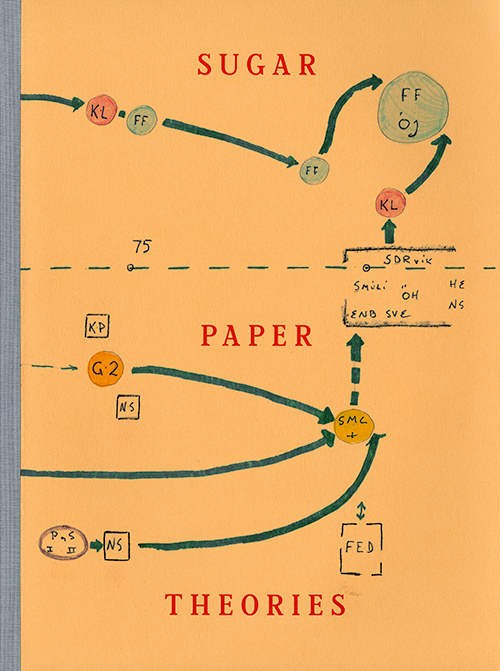| SIMON DENISON IMAGE & TEXT |
| PREVIOUS | NEXT |
SUGAR PAPER THEORIES Jack Latham Here Press, 2016 ISBN 978-0-9935853-2-6 Pb
Sugar Paper Theories, a hybrid of artwork and reportage, takes for its subject a double murder inquiry in Iceland that took place in the 1970s. Four people were convicted for the murders, and two others as accessories, on the basis of confessions which are now regarded by many as unsafe. The book’s text is written by Gisli Gudjonsson, a UK-based forensic psychiatrist and expert in false confession, who played a minor role in the original investigation and is now part of a campaign to have the cases reheard. Like a number of other recent works in which artist-photographers have adopted a quasi-curatorial approach, the book presents prison diary extracts, press cuttings, records and photographs from the Icelandic police archive, as well as new pictures made by Latham. Some photographs depict sites or people directly connected to the case and described in the text, while others seem designed to induce a more open-ended reverie: the surface of the sea (Disappearance #1), a fishtank (Erla’s Goldfish), a view of mountains (Sighting #1). Three portraits are entitled Conspiracy Theorist #1–#3, but we are not told who the subjects are or any details of their theories. The book is presented as an aesthetic object, constructed in an arrangement of eight types and colours of paper stock (some of it sugar paper) in three sizes, with various styles of fold, resembling an artfully-designed scrapbook. Latham’s pictures have a muted ‘German’ quality, a sense of order, stillness and clarity. The work is attractive and intriguing, but reading this as a story about possible gross miscarriage of justice, some might regard Latham’s aestheticism as self-indulgent. However, art’s refusal to tie off loose ends, its strategies of provocation and evasion perhaps highlight the baffling complexities, the seductive leads and blind alleys that face all investigators – those looking back at the past as much as those who once lived there. |
 |
|---|---|